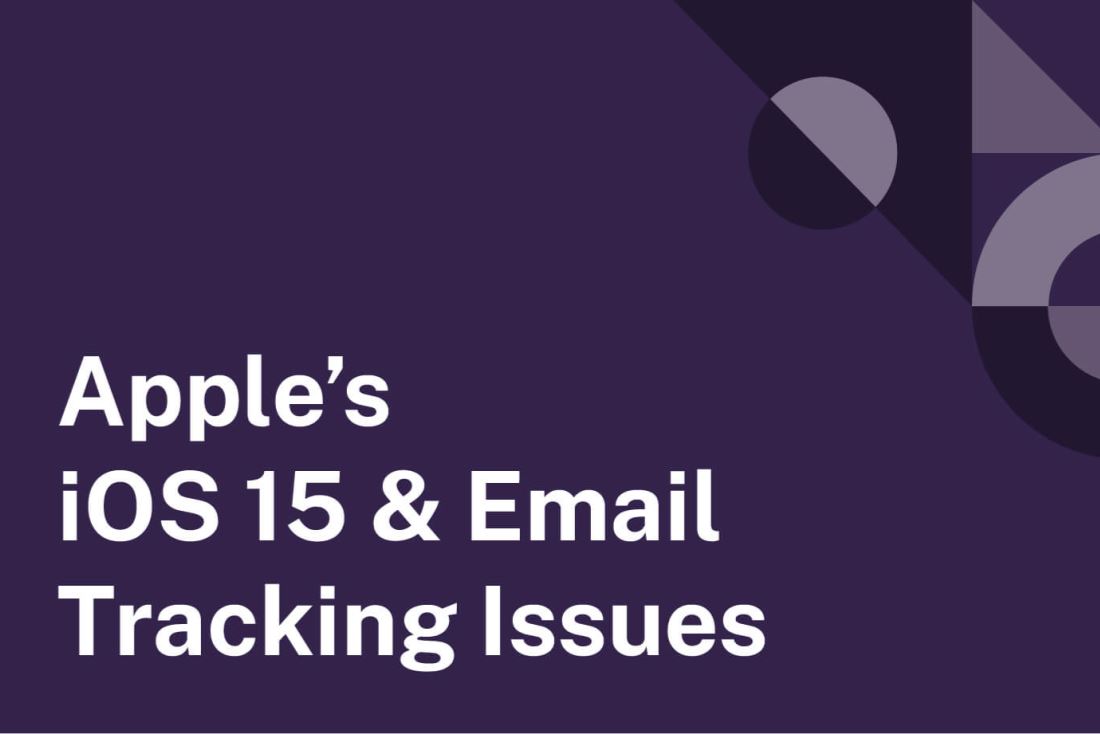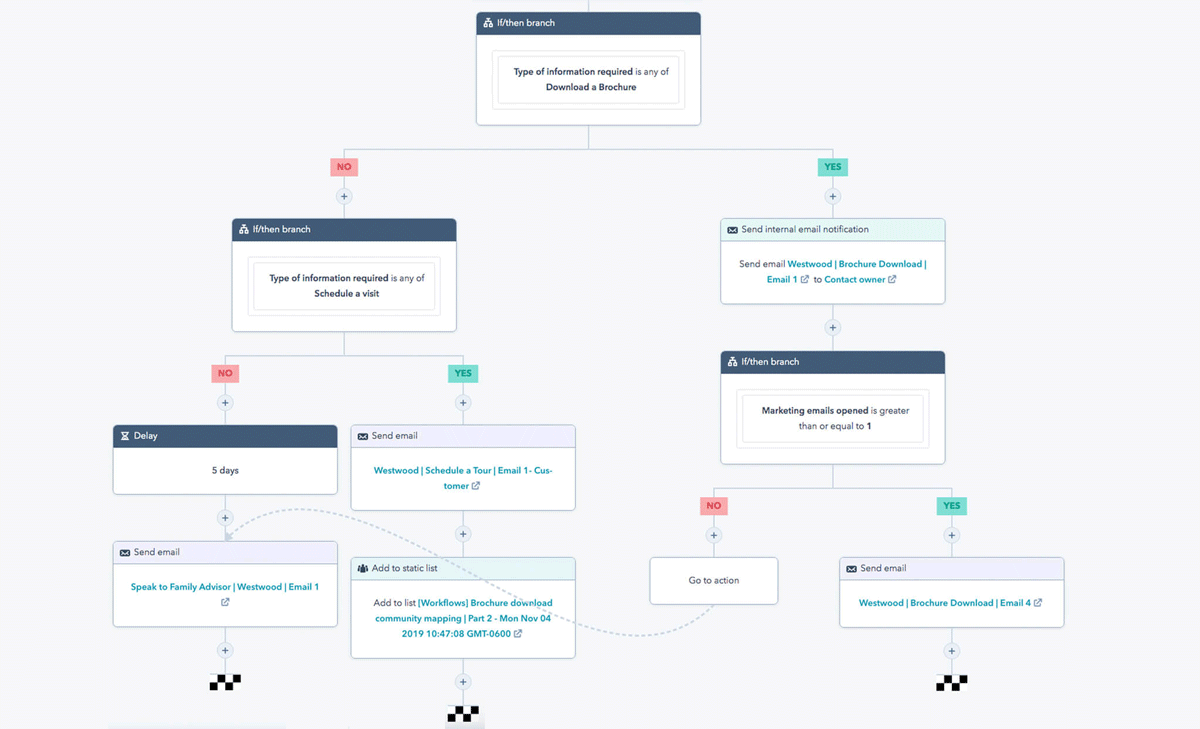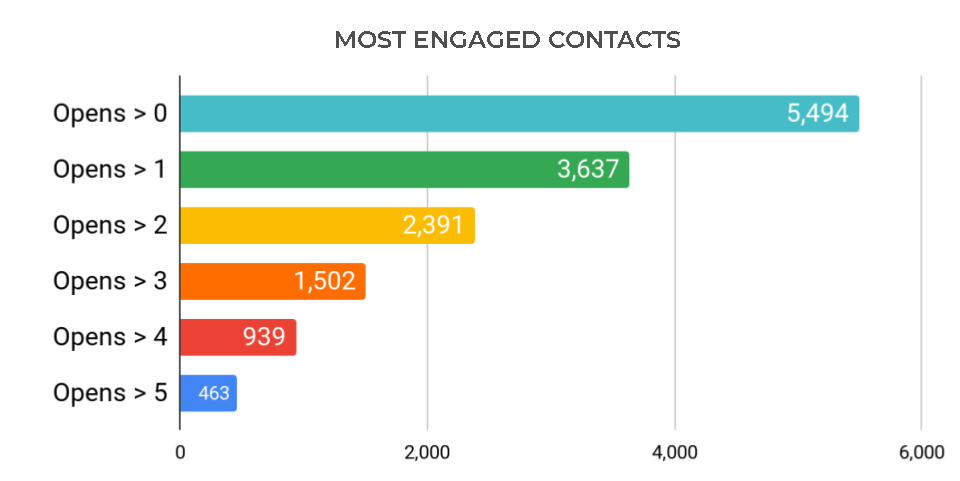Article
Apple iOS 15's Email Tracking Issues & How to Handle Them

Apple iOS 15 brings new security features, and with it, several challenges for email marketers to avoid when measuring email performance. Now, email open rates will be less-reliable when using pixel-tracking methods for measuring email opens.
Because most email platforms use pixel-tracking, we’re breaking down:
- How iOS updates affect measuring email engagement
- Email automation strategies that can be affected by these updates
- Planning ahead (or working around) these updates without derailing your email campaigns
- Tips for better email tracking and segmentation
And this update’s a big deal, because for years, marketers like myself have relied on pixel-tracking – which is essentially a tiny, 1×1 pixel hidden within images of an email.
When you open an email, your computer downloads the image files from a server. Once that happens, the server is notified that the image was downloaded, and therefore, the email is “opened”.
As a user – I’m thrilled. Two new iOS 15 features will essentially limit “spam” email. It’ll be easier to unsubscribe – and stay unsubscribed – from email lists.
As a digital strategist, I’m a little less thrilled.
New iOS 15 Email Features
Specifically, two new iOS 15 features will affect email measurement:
- Mail Privacy Protection: Users will be able to “hide” their email opens from email platforms using pixel-tracking platforms. That means MailChimp, HubSpot, Constant Contact and similar platforms will be less accurate when tracking email opens.
- Hide My Email: Users can designate emails to be sent to a temporary email account, which is then automatically forwarded to their real email. That leads to further misreporting, because the temporary email account may have opened the email – which would report as an “open” – whether or not the recipient actually opens the email.
How iOS 15 Affects Email Tracking and Measurement
If you’re collecting marketing analytics, you’ll likely see email open rates increase significantly for iOS users. Now, when I usually see email open rates spike, I know our campaigns are improving.
Going forward, all digital marketers will need to critically evaluate the open rate increases. With the Hide My Email feature, emails will actually be “opened” several times before they deliver to the intended contact. That’s because Apple is essentially “opening” the email before the contact does.
So, just because an email is measured as “open”, doesn’t mean the contact truly opened it – it may have been opened by Apple Servers. So, that leads into our first tip for automated email campaigns
Tip #1: Remove Email Automation Triggers
If you’re running email automation with “email opens” as an automation trigger, consider removing these. Because, if your marketing automation is built around email opens that don’t actually happen, you can over-email a contact, or be misled about their actual engagement with your content. Or worse, due to these new features, a contact could truly open an email, but your platform might not recognize this. If you’ve planned for a contact to receive your best piece of content only after they open a specific email, you could abandon a lead, or potentially miss out on a great conversion or customer.
Or worse, due to these new features, a contact could truly open an email, but your platform might not recognize this. If you’ve planned for a contact to receive your best piece of content only after they open a specific email, you could abandon a lead, or potentially miss out on a great conversion or customer.
Tip #2: Open Rates Matter Less
BrandExtract reports on several ongoing email campaigns for various clients – primarily using HubSpot’s email marketing tool. Going forward, we’re placing less value on email open rates, and more value on click-through rate (CTR).
Tip #3: Segment Your Email List for iOS Users
Technically, you can segment your email list by iOS and non-iOS users. This may avoid the pixel-tracking issue for a time, allowing marketers to gain a more accurate view of open rates for non-iOS users who aren’t using this Hide My Email feature. Then, when reviewing email open rates for the iOS users, proceed with email reporting knowing these open rates are likely inflated. However, this isn’t an evergreen tip, as more platforms will likely adopt or develop this feature.
Tip #4: Reconsider the Lifecycle Stages
Audit all marketing automation campaigns for any automation triggers that can incorrectly trigger – or not trigger – due to misleading email open stats. For example, if your email marketing campaign is set to send a brochure only after a contact opened 8 emails, but email opens aren’t reliable, you could send a brochure too early, before the contact is engaged enough, or informed enough about your unique selling propositions. Or, the contact may be “ready” to engage with additional content, but your automated strategy can’t recognize this.
Tip #5: Use “Unengaged” Lists
Review any email lists based rely on email engagement. At BrandExtract, we often create “unengaged” lists, which collect all contacts who haven’t opened an email since the last four emails sent. We use this as a “do not send” list, or a list of contacts who should be excluded from the next email send.
These “unengaged” lists are a good tactic to avoid overloading someone with emails. It also reduces total unsubscribers in your email campaigns, which helps preserve email health. But, now these type of lists will be less reliable – someone might not have opened the last four emails, but thanks to the Hide My Email feature, it might appear as if they contact opened an email. This would then allow this contact – someone who’s not truly engaged with our emails – to continue to receive them.
But, now these type of lists will be less reliable – someone might not have opened the last four emails, but thanks to the Hide My Email feature, it might appear as if they contact opened an email. This would then allow this contact – someone who’s not truly engaged with our emails – to continue to receive them.
Going forward, we’re creating a variety alternatives to these “unengaged” lists, to test which method is most reliable going forward. Mileage may vary for each individual marketer and their specific strategies and base of contacts, so if you rely on “unengaged” lists, too, take particular care with this challenge.
Tip # 6: Avoid IP-based Location and Timezone Parameters
Reconsider using realtime email tactics that use IP-based location or timezone parameters. Now, nailing down exact locations and timezones will be less reliable. So, if you set an email to send at 8AM for each contact in their respective timezone, your email recipients could receive emails at wildly different times. After all, most people don’t enjoy waking up to a marketing email at 3AM.
What's Next for Email Measurement and iOS 15?
Here’s the good news – if you’re following email best practices, your overarching strategy won’t change much. Keep creating great content – the kind that provides actual answers in a reasonable cadence. Allow users to update email preferences easily, monitor how many emails your contacts receive each month, and analyze your unsubscribe, open and bounce rates to preserve your email health.
On a granular level, consider removing location and time-based email sends. Perform an audit of your automated email campaigns, looking for any triggers that rely on email opens, number of email opens in a time period, last engagement dates, and similar metrics.
Inform your clients that open rates will likely increase, without increasing actual engagement. And know that just because an email is reported as “open” doesn’t mean your contact actually opened it. Placing greater weight on actual engagement – click-throughs, sign-ups – will serve you better in the long run.
Ultimately, you want to provide valuable answers to your potential leads – not pester them. So these new challenges can – hopefully – improve the value of marketing as a whole.
And this likely isn’t the end – Apple will continue to release new features, and other developers will follow with similar, or more stringent safety features, so getting ahead of the email security curve will only set you up for better success in the long run.

